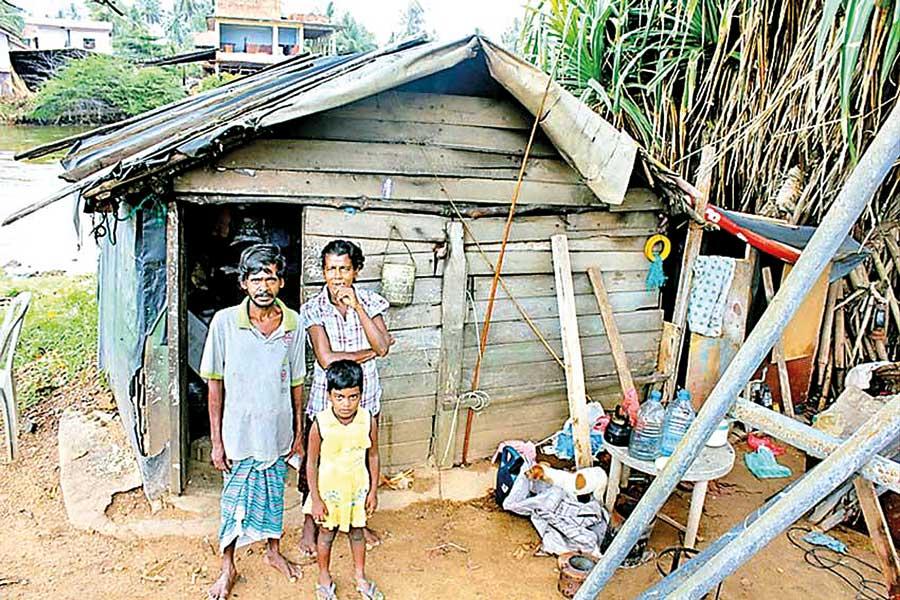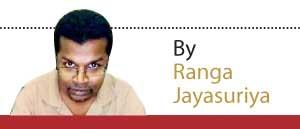11 Oct 2022 - {{hitsCtrl.values.hits}}

Sri Lanka's present economic crisis drove the already suffering people to the level of 'new poorest'
The Cabinet this week will take up a proposal to voluntarily downgrade Sri Lanka from a Middle- Income Country to a Low-Income country in a bid to obtain concessionary financing from international partners. Statistically speaking, this would mean revert Sri Lanka’s economic status in 2004, the year when the country was elevated from low-income status to a lower-middle-income country.
a Low-Income country in a bid to obtain concessionary financing from international partners. Statistically speaking, this would mean revert Sri Lanka’s economic status in 2004, the year when the country was elevated from low-income status to a lower-middle-income country.
According to the World Bank, for the 2023 fiscal year, low-income economies are defined as those with a GNI per capita, calculated using the World Bank Atlas method, of US$1,085 or less in 2021; lower-middle-income economies are those with a GNI per capita between US$1,086 and US$4,255; upper-middle-income economies are those with a GNI per capita between US$4,256 and US$13,205; high-income economies are those with a GNI per capita of US$13,205 or more.
According to the same method, Sri Lanka’s GNI for the year 2021 was US$ 3,820 -- though the Sri Lankan rupee suffered runaway depreciation in April this year when the Government of Gotabaya Rajapaksa out of the blue floated the local currency after having burnt over US$ 5 billion of the foreign reserve to maintain an unsustainable peg of Rs. 200 to US$.
Accounting for the recent depreciation of the rupee, Sri Lanka’s current per capita GNI is roughly US$ 3,000, which is well above the low-income status. In fact, Sri Lanka graduated to Upper Middle-Income country status in 2019, and the following year, with the economic fallout of Covid-19, it fell back to a lower middle-income status.
The proposal for the voluntary downgrade to a lower income status is motivated by the ability to obtain the assistance from International Development Association (IDA), a member of the World Bank, which provides concessionary loans and grants to the world’s poorest countries, and countries that suffer from creditworthiness. IDA and International Bank for Reconstruction and Development (IBRD) are collectively known as the World Bank. The latter provides loans to middle-income countries and credit-worthy low-income countries.
"Accounting for the recent depreciation of the rupee, Sri Lanka’s current per capita GNI is roughly US$ 3,000, which is well above the low-income status. In fact, Sri Lanka graduated to Upper Middle-Income country status in 2019, and the following year, with the economic fallout of Covid-19, it fell back to a lower middle-income status"
Since its launch in 1960, 44 countries that were eligible for IDA assistance have graduated, while nine countries have relapsed due to the inability to maintain creditworthiness and poverty. IDA concessionary financing is primarily directed at poverty reduction, hunger, improved sanitation, maternal health, etc. These are also areas where Sri Lanka had recorded substantial gains over time. It is ranked “high” on Human Development Index. IDA does not support the balance of payment problems, the root cause of Sri Lanka’s economic crisis.
Therefore, the government’s decision to self-downgrade signals its inability to finance the basic social welfare, education and health, etc. the cornerstone of the welfare state – that is despite it is maintaining an elephantine Cabinet and deputy ministers, carrying the rent-seeking political system to an all-time low.
The revert to IDA eligibility may also provide access to debt relief in more concessionary terms, though previous debt relief initiatives were directed at low-income countries and not those who voluntarily degraded to get the easy money. Even there, the debt relief announced by China for a host of low-income countries was a fraction of their debt or a mere US$ 113 million and did not go as far as to address their debt sustainability. Paris Club lenders are more generous, but Sri Lanka’s two primary bilateral lenders are China and Japan.
A voluntary revert to a low-income status would not address Sri Lanka’s core economic problems. The stubborn truth is most countries that relapsed to IDA eligibility such as Zimbabwe, Ivory Coast, Congo, and Nigeria, etc. never recovered. If the government’s bid is successful, IDA may provide access, for the time being, to a limited amount of grants, and interest-free and concessionary loans. Some of that then might be given away as dole-outs and would help the self-preservation of a regime that is devoid of legitimacy.
Instead of helping, IDA assistance would serve as yet another distraction from the urgent need to undertake comprehensive economic reforms and combat entrenched corruption.
Sri Lanka’s real economic problem is that it has stagnated as a low-growth captive market that was at the mercy of a few wheeler dealers and vested interest groups. These members, who are politically connected and influential, have opposed every other measure of economic reforms, be it liberalization of shipping, free trade agreements, Economic and Technology cooperation agreements with India etc., and looted at every instance, whenever import restrictions are placed, presumably to help the local industries. See how the ban on imports of bath ware and building materials resulted in massive price manipulation by local monopolies.
"Even there, the debt relief announced by China for a host of low-income countries was a fraction of their debt or a mere US$ 113 million and did not go as far as to address their debt sustainability. Paris Club lenders are more generous, but Sri Lanka’s two primary bilateral lenders are China and Japan"
Sri Lanka is a low-growth captive market because it has refused to reform. Instead of looking for a self-serving and non-existing easy way out from the current economic misery, the government should undertake comprehensive economic reforms, dismantling restrictive business laws, reforming and, where necessary disbanding, the SOEs and creating competition.
Rather than re-inventing the wheel, which Sri Lankans have repeatedly proved lacking ingenuity, the government can adopt a model or combination of models that already work, be it in Malaysia, Vietnam or Singapore.
Implanting a foreign model right off the bat would cause initial social and economic displacement, but we are already neck-deep in the crisis and there is nothing much to lose.
However over time, like in Peru, under Alberto Fujimori’s ‘Shock therapy’, the economy would adapt and leapfrog.
The alternative to this would be the endless self-degradation of the nation and its people.
Follow @RangaJayasuriya on Twitter
10 Jan 2025 1 hours ago
10 Jan 2025 2 hours ago
10 Jan 2025 3 hours ago
10 Jan 2025 3 hours ago
10 Jan 2025 3 hours ago